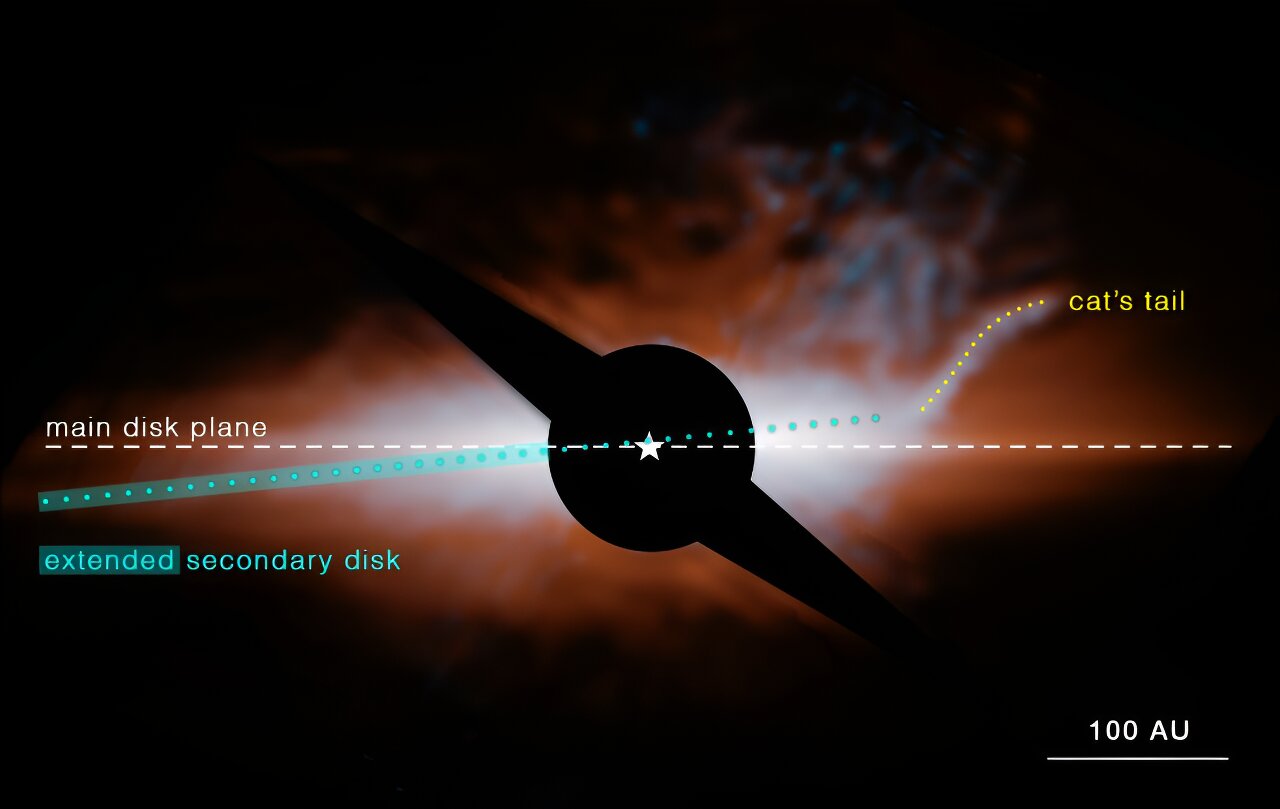A team of astronomers has discovered an unusual formation in a system 63 light-years away. Thanks to modern surveillance instruments, they are trying to explain what kind of “cat’s tail” it is.

Beta Pictoris Star
Observations using NASA’s Hubble Space Telescope have detected a second dust disk in this system, tilted relative to the outer cluster that is the first to be seen. Now, a team of astronomers using the James Webb Space Telescope to capture images of the Beta Pictoris system has discovered a new, previously unseen structure.
A team led by Isabel Rebollido from the Astrobiology Center in Spain used NIRCam (near-infrared camera) and MIRI (mid-infrared instrument) cameras to investigate the composition of previously discovered main and secondary debris disks of Beta Pictoris. The results exceeded their expectations, revealing a sharply tilted branch of dust, similar to the cat’s tail, stretching from the southwestern part of the secondary “debris” disk.
Amazing cosmic structure
Beta Pictoris, a young planetary system located just 63 light-years away, continues to intrigue scientists even after decades of in-depth study. It has the first dust disk photographed around another star, a cluster formed as a result of collisions between asteroids, comets and planetesimals.
Even with the help of JWST, observing the Beta Painter in the right wavelength range was crucial for detecting the “cat’s tail”, since it appeared only in the MIRI instrument data. The James Webb data also found a temperature difference between the two disks of the system, which is probably due to a difference in their chemical composition.
To explain the higher temperature, the team concluded that the dust could be a highly porous “organic refractory material” similar to the substance found on the surfaces of comets and asteroids in our Solar System.
Where does the “cat’s tail” grow from
However, one important question remains: How can we explain the shape of the “cat’s tail”, which is uniquely curved, unlike those that can be seen in disks around other stars? Rebollido and her team simulated various scenarios, trying to simulate the “tail” and unravel its origin. Although further research and testing are required, the team hypothesizes that this formation is the result of a dust formation event that occurred just a hundred years ago.
“Something happens—like a collision—and a lot of dust is produced,” said Marshall Perrin, a co-author of the study at the Space Telescope Science Institute in Baltimore, Maryland. “At first, the dust goes in the same orbital direction as its source, but then it also starts to spread out. The light from the star pushes the smallest, fluffiest dust particles away from the star faster, while the bigger grains do not move as much, creating a long tendril of dust.”
“The cat’s tail feature is highly unusual, and reproducing the curvature with a dynamical model was difficult,” explained astronomers. “Our model requires dust that can be pushed out of the system extremely rapidly, which again suggests it’s made of organic refractory material.”
According to phys.org
Follow us on Twitter to get the most interesting space news in time
https://twitter.com/ust_magazine


